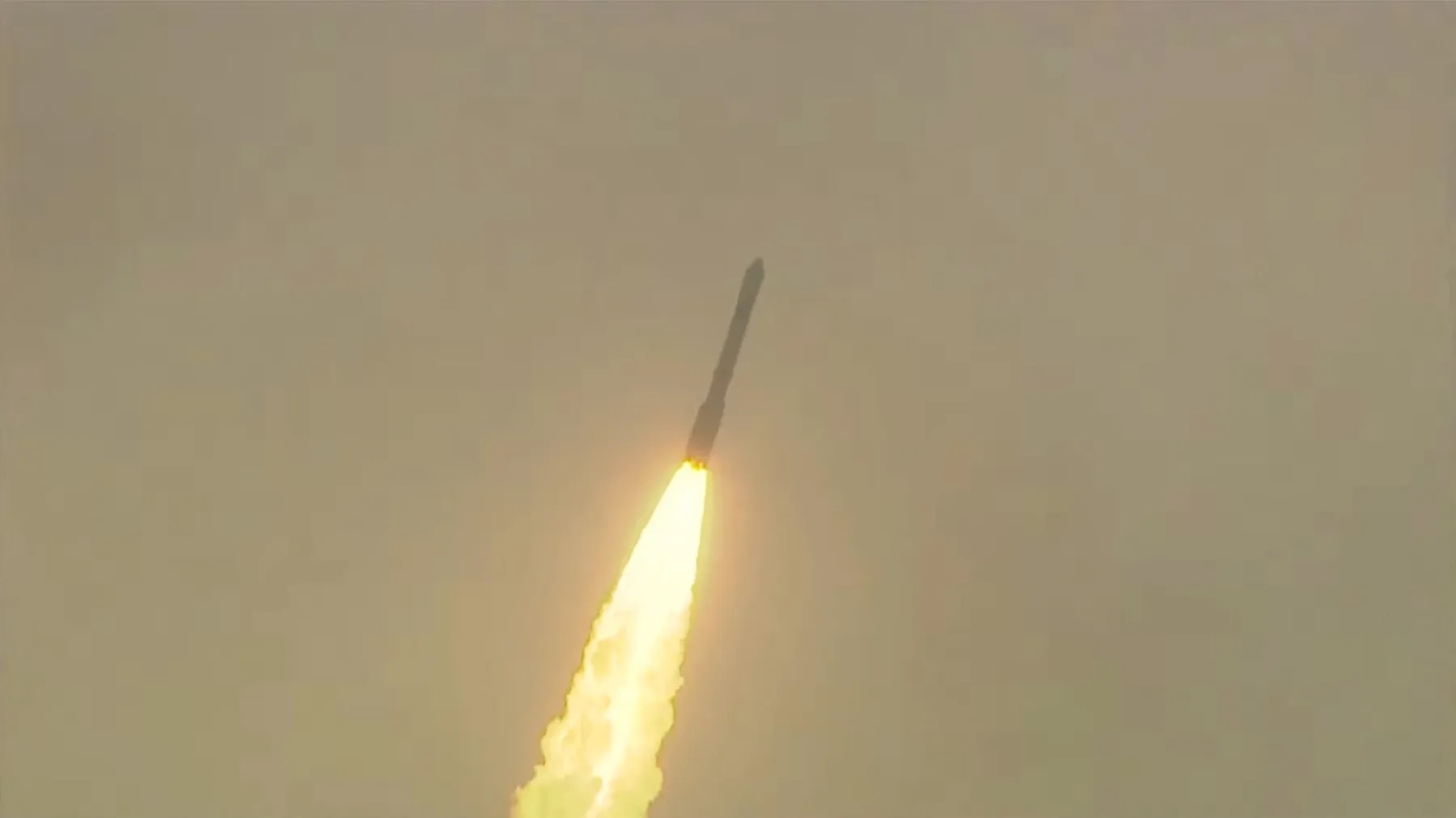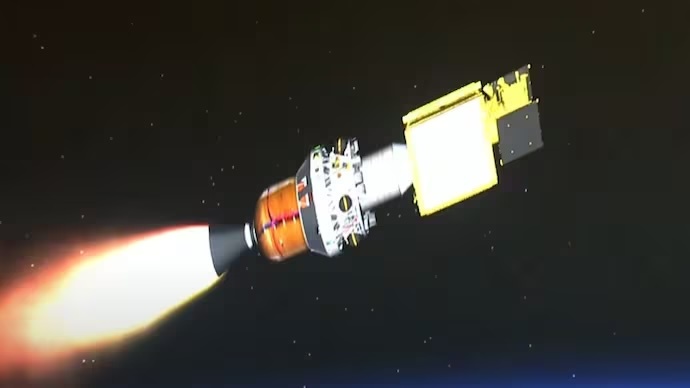18.05.2025

A PSLV lifted off May 17 (U.S. time) carrying the EOS-09 radar imaging satellite, but a problem with the third stage kept it from reaching orbit. Credit: ISRO
WASHINGTON — An Indian launch of a radar imaging satellite failed May 17 when a problem with the third stage prevented the payload from reaching orbit.
A Polar Satellite Launch Vehicle (PSLV) lifted off from the Satish Dhawan Space Center at 8:29 p.m. Eastern. Its payload was the EOS-09 radar imaging satellite.
The launch appeared to go as planned until a little more than six minutes after liftoff, during the burn of the rocket’s solid-fuel third stage. At about T+366 seconds, telemetry showed the vehicle’s velocity slowing, deviating from the planned profile. The webcast of the launch by the Indian space agency ISRO cut away from that telemetry display several seconds later.
“Up to the second stage the performance was quite normal. The third stage motor started perfectly but during the functioning of the third stage we are seeing an observation, and the mission could not be accomplished,” said V. Narayanan, chairman of ISRO, less than 10 minutes later. He did not elaborate on the nature of the “observation” or provide any other details, although he later told Indian media that there was a drop in chamber pressure in the third stage.
The failure was the first for the PSLV since August 2017, when the payload fairing failed to separate on a launch of a navigation satellite, preventing the satellite from reaching orbit. The only other failures of the PSLV are from the rocket’s earliest launches in the 1990s, including its first launch in 1993 and a partial failure on its first operational mission in 1997.
The PSLV has long been considered the workhorse of India’s space program, although it has launched only a little more than 60 times in its history. This was the first PSLV launch of 2025 after three launches in each of the last three years.
The payload, the EOS-09 satellite, is identical to the EOS-04 satellite launched in 2022. The satellite weighed nearly 1,700 kilograms at launch and carried a synthetic aperture radar payload.
“EOS-09 is designed to provide continuous and reliable remote sensing data for operational applications across various sectors,” ISRO said before the launch, but provided few other details about the satellite. EOS-04 was widely seen as supporting India’s military, in addition to any civil applications.
Quelle: SN
+++
PSLV-C61 mission fails: Former Isro scientist explains what happens next
Here's how Isro typically approaches the analysis of a lost mission, such as a launch failure.

It was carrying the Earth Observation Satellite (EOS-09) to space in a bid to give India an all-weather imaging edge. (Photo: Isro)
The Indian Space Research Organisation (Isro) launched the Polar Satellite Launch Vehicle at 5:59 a.m. IST from Sriharikota’s Satish Dhawan Space Centre, but therocket veered off trajectory during the critical third-stage burn ending up in a major failure.
It was carrying the Earth Observation Satellite (EOS-09) to space in a bid to give India an all-weather imaging edge.
WHAT HAPPENS NOW?
When a space mission fails, Isro initiates a meticulous and systematic process to analyse the failure and identify its root cause. This process is critical to ensure future missions are safer and more reliable.
Here’s how Isro typically approaches the analysis of a lost mission, such as a launch failure.
The first step is to form a Failure Analysis Committee (FAC), comprising experts from various Isro centers, including engineers, scientists, and mission specialists. This team is tasked with reviewing all available data from the mission.
During a launch, Isro’s telemetry systems collect vast amounts of real-time data, such as velocity, altitude, pressure, temperature, and engine performance.
For instance, in the case of a failure like the PSLV-C61/EOS-09 mission, where velocity dropped unexpectedly, the FAC would examine telemetry graphs showing parameters like the sharp decline in relative velocity (from 6 km/s to 2.45 km/s) and the corresponding altitude and trajectory data.
The FAC will thoroughly review the flight data along with all data related to the activities ranging from the stage preparation at the launch complex, countdown to lift-off.
Next, the committee analyses the flight data to pinpoint the exact moment of deviation.
This involves comparing actual performance against the expected profile—such as the target velocity curve after satellite separation. If the data shows anomalies, like engine shutdowns or structural issues, the team cross-references it with ground-based radar and tracking station inputs to reconstruct the sequence of events. For example, if the third stage (PS3) malfunctioned, the team would investigate propulsion system logs and closed loop guidance telemetry.
Isro also conducts simulations and reviews the rocket’s design and manufacturing processes. This includes checking for potential flaws in components, such as engines, avionics, or guidance systems.
Additionally, software algorithms controlling the rocket’s navigation and control systems are audited for errors.
The FAC then compiles a detailed report, identifying the root cause—be it a mechanical failure, human error, or external factors like weather.
Recommendations are made to address the issue, such as design modifications or procedural changes.
After the PSLV-C1 failure in 1993 due to a software glitch and EOS03 failure due to tank pressurization issue in GSLV CUS, Isro revamped its testing protocols and active mechanisms to attain required performance.
This rigorous process ensures that each failure becomes a stepping stone for future success, enhancing Isro’s reliability in space exploration.
Quelle: INDIA TODAY
